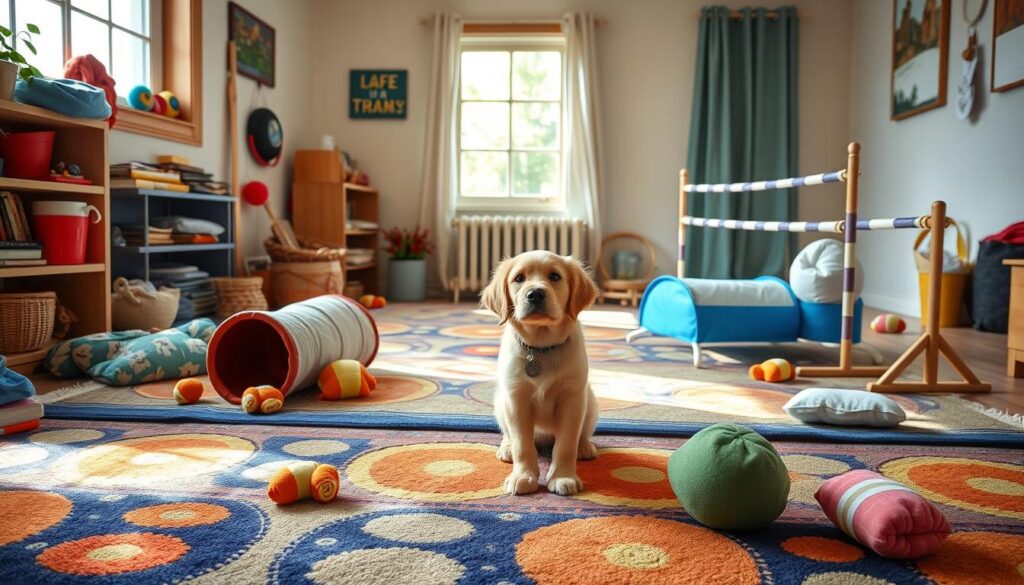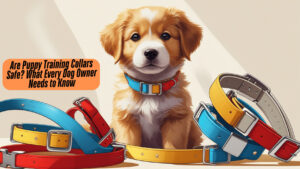Training your growing puppy with gentle and secure methods is essential for fostering good behavior and a strong bond. Below is an analysis of five top-rated training collars and harnesses, detailing their pros and cons to help you make an informed decision.
1. PetSafe Gentle Leader Headcollar
Pros:
- Effective Training Aid: Recommended by renowned dog trainers, the Gentle Leader helps in behavioral modification by redirecting your dog’s focus towards you during walks.
- Comfortable Design: Allows dogs to pant, eat, drink, and bark naturally while providing control over unwanted behaviors.
- Variety of Sizes and Colors: Available in multiple sizes and colors, ensuring a proper fit and style preference.
Cons:
- Initial Resistance: Some dogs may resist wearing the headcollar initially and require a period of adjustment.
- Proper Fitting Required: Ensuring the correct fit is crucial for effectiveness and comfort, which may require careful adjustment.
Best Used For: Dogs prone to pulling or lunging on the leash.
Where to Buy: Available on Amazon, Petco, and the official PetSafe website.
2. Mighty Paw Leather Training Collar
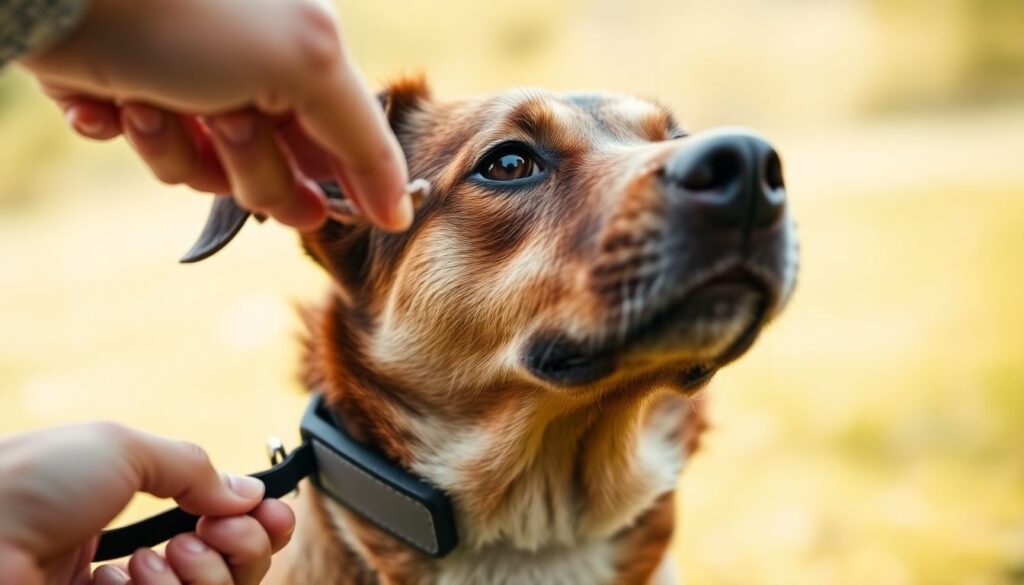
Pros:
- Durable Materials: Crafted from high-quality leather and stainless steel, offering longevity and resistance to wear.
- Gentle Correction: The martingale design provides gentle correction without causing pain, making it suitable for training.
- Aesthetic Appeal: The leather construction offers a classic and stylish look.
Cons:
- Maintenance Required: Leather products may require regular cleaning and conditioning to maintain their quality.
- Limited Sizing Options: May not be suitable for very small or very large breeds due to size constraints.
Best Used For: Dogs undergoing basic obedience training.
Where to Buy: Available on Chewy, Mighty Paw’s official site, and Amazon.
3. Blueberry Pet Training Martingale Collar
Pros:
- Personalization: Can be customized with your dog’s name and phone number, enhancing safety.
- Secure Fit: The martingale design prevents dogs from slipping out of the collar during walks.
- Variety of Designs: Offers numerous colors and patterns to suit different preferences.
Cons:
- Not Ideal for Heavy Pullers: May not provide sufficient control for dogs that pull excessively.
- Limited Adjustability: Ensuring a perfect fit might be challenging for dogs with neck sizes on the borderline of available sizes.
Best Used For: Stylish, safety-conscious dog owners with well-behaved walkers.
Where to Buy: Available on Blueberry Pet’s official site, Chewy, and Amazon.
4. Dexil NERVOUS Clip Collar
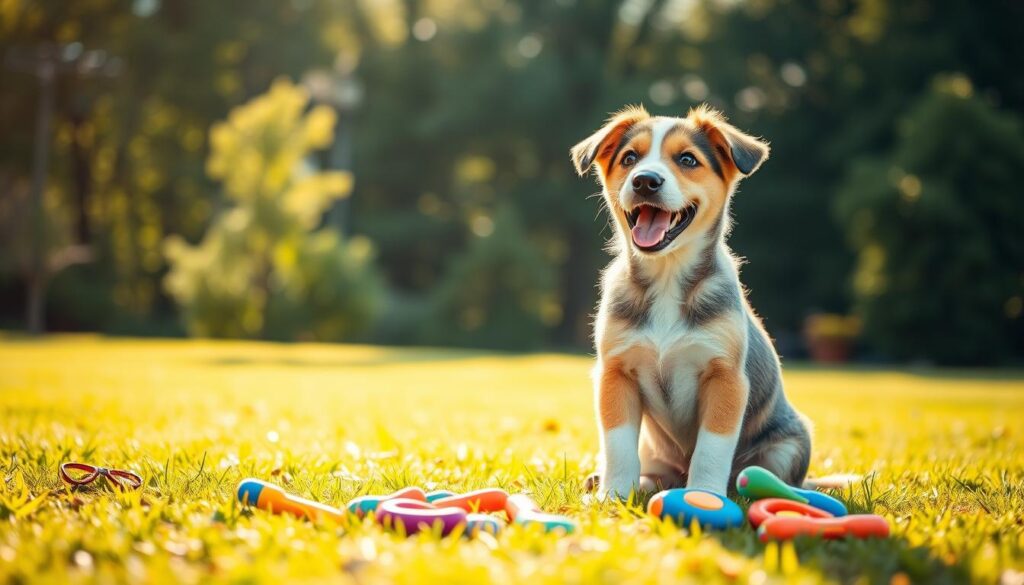
Pros:
- Clear Communication: The bright yellow collar with ‘Nervous’ embroidered helps inform others about your dog’s temperament, promoting respectful interactions.
- High-Quality Material: Made from durable materials suitable for regular use.
- Safety Enhancement: Aids in preventing unwanted approaches from people and other dogs.
Cons:
- Limited Functionality: Serves more as an indicator of the dog’s temperament rather than a training tool.
- Visibility Concerns: Effectiveness relies on others noticing and understanding the collar’s message.
Best Used For: Dogs that are anxious or reactive in public settings.
Where to Buy: Available on Amazon and Dexil’s official website.
5. 2 Hounds Design Freedom No Pull Dog Harness
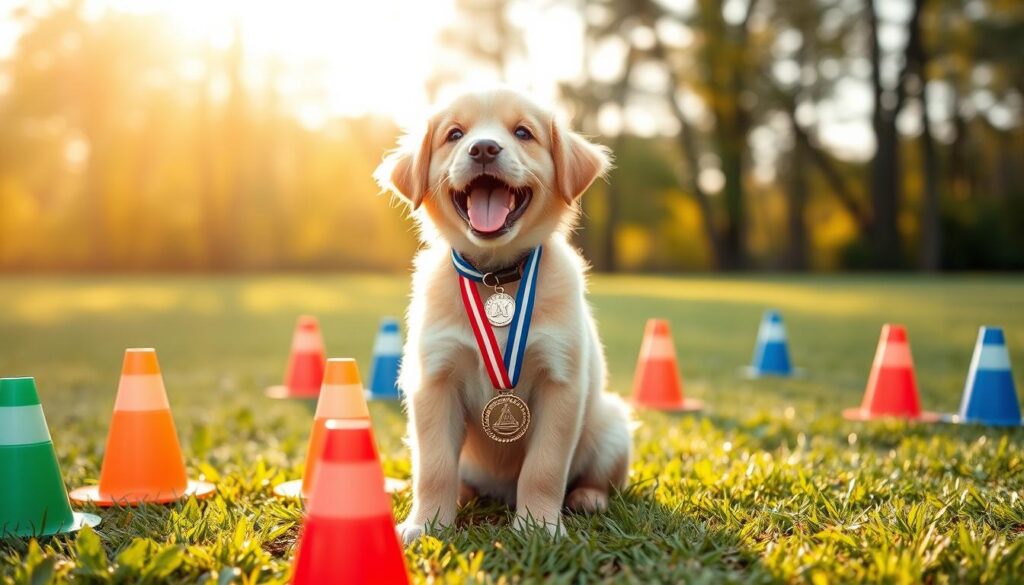
Pros:
- Reduces Pulling: Designed to discourage pulling behavior, making walks more enjoyable.
- Comfortable Fit: Features a soft velvet lining to prevent chafing and discomfort.
- Dual Leash Attachments: Offers front and back leash attachment points for versatile control.
- Positive Reviews: Users have reported significant improvements in their dogs’ walking behavior.
Cons:
- Chewing Risk: Not chew-proof; supervision is required to prevent damage.
- Adjustment Learning Curve: Some users may need time to adjust the harness correctly for optimal fit and effectiveness.
Best Used For: Strong pullers or dogs in need of improved leash manners.
Where to Buy: Available on 2 Hounds Design’s official site, Chewy, and Amazon.
choose gentle training methods and collars made for your breed’s needs.
Conclusion: Choosing the Right Training Collar for Long-term Success
Starting your puppy’s training is exciting. Choosing the right dog collars is key for their safety and comfort. Think about your puppy’s size, growth, and what you want to teach them. This will help you pick a collar that’s gentle and effective.
Training is more than just teaching commands. It’s about creating a strong bond and trust with your puppy. With the right collar and a positive approach, you’ll build a lifelong connection with your furry friend.
FAQ
What are the key features to look for in a training collar for my puppy?
Look for adjustability, durability, and comfort in a training collar for your puppy. Safety features like emergency release are also key. Make sure the collar fits well and is made from good materials like nylon or leather.
How do I measure my puppy for the perfect training collar fit?
Use a flexible tape or string to measure your puppy’s neck. Leave room for two fingers between the collar and their neck. This ensures a snug but comfortable fit.
What are the different types of training collars available for puppies?
There are harnesses, head collars, and prong collars for puppies. Each has its own benefits and drawbacks. Choose the one that suits your puppy’s needs and your training style.
How do I properly introduce and use a training collar with my puppy?
Start by letting your puppy get used to the collar for short times. Use positive reinforcement training. Gradually increase the time and use it in training sessions. Always watch your puppy when they wear the collar and don’t leave it on when they’re alone.
What are some common mistakes to avoid when using a training collar with my puppy?
Avoid sizing errors, using the wrong material, and improper use. Make sure the collar fits right and is made from suitable materials. Use it correctly during training sessions.
How do I maintain and clean my puppy’s training collar?
Clean the collar regularly to keep it working well. Use a damp cloth or mild soap and water. Let it dry before using it again. Check for wear and replace it if needed.
When should I replace my puppy’s training collar?
Replace the collar when your puppy grows out of it or shows signs of wear. Check the fit and condition often to keep your puppy safe and comfortable.
